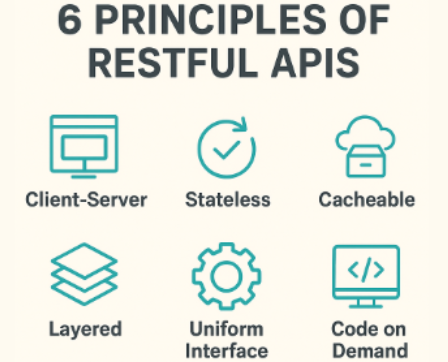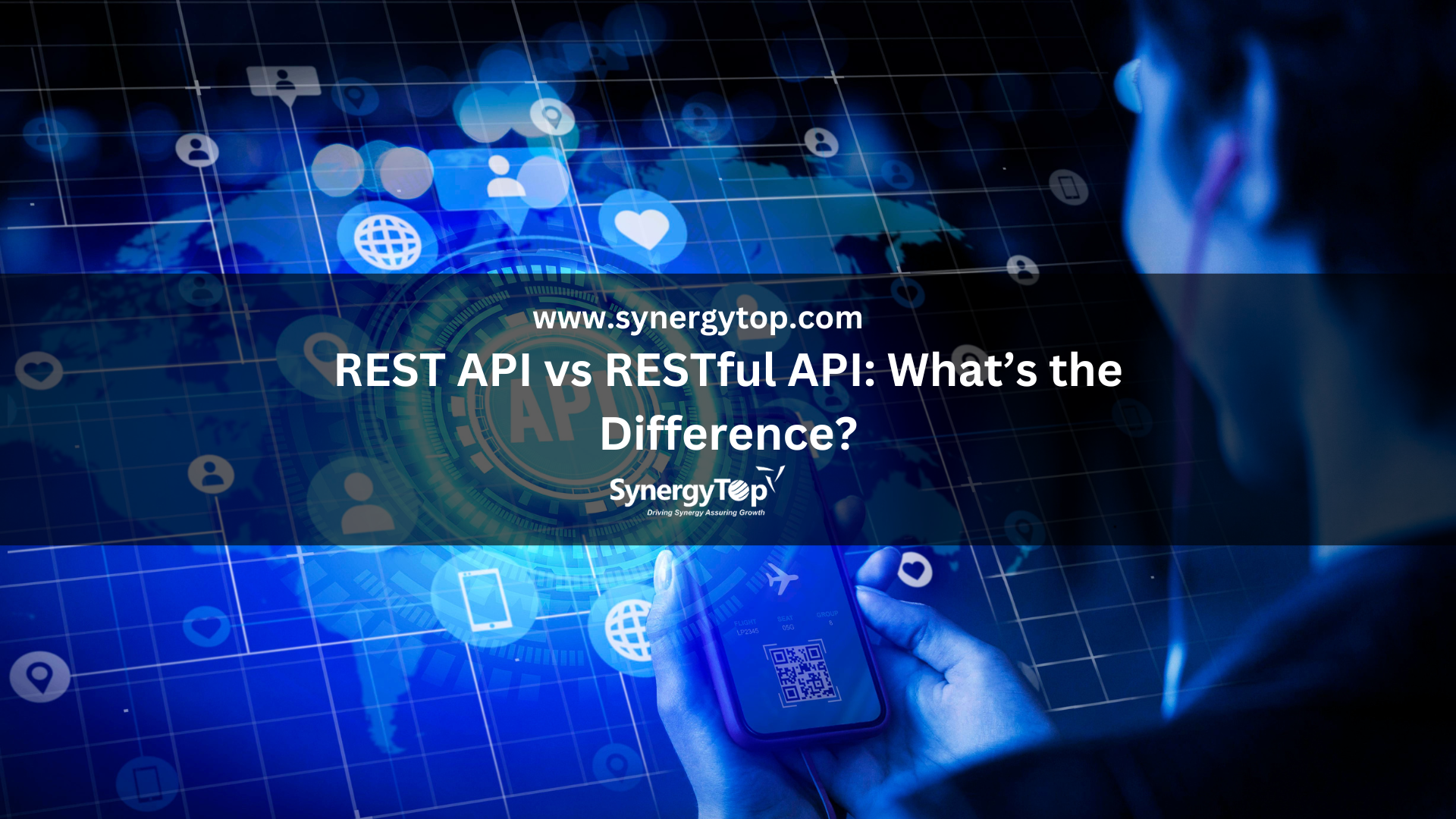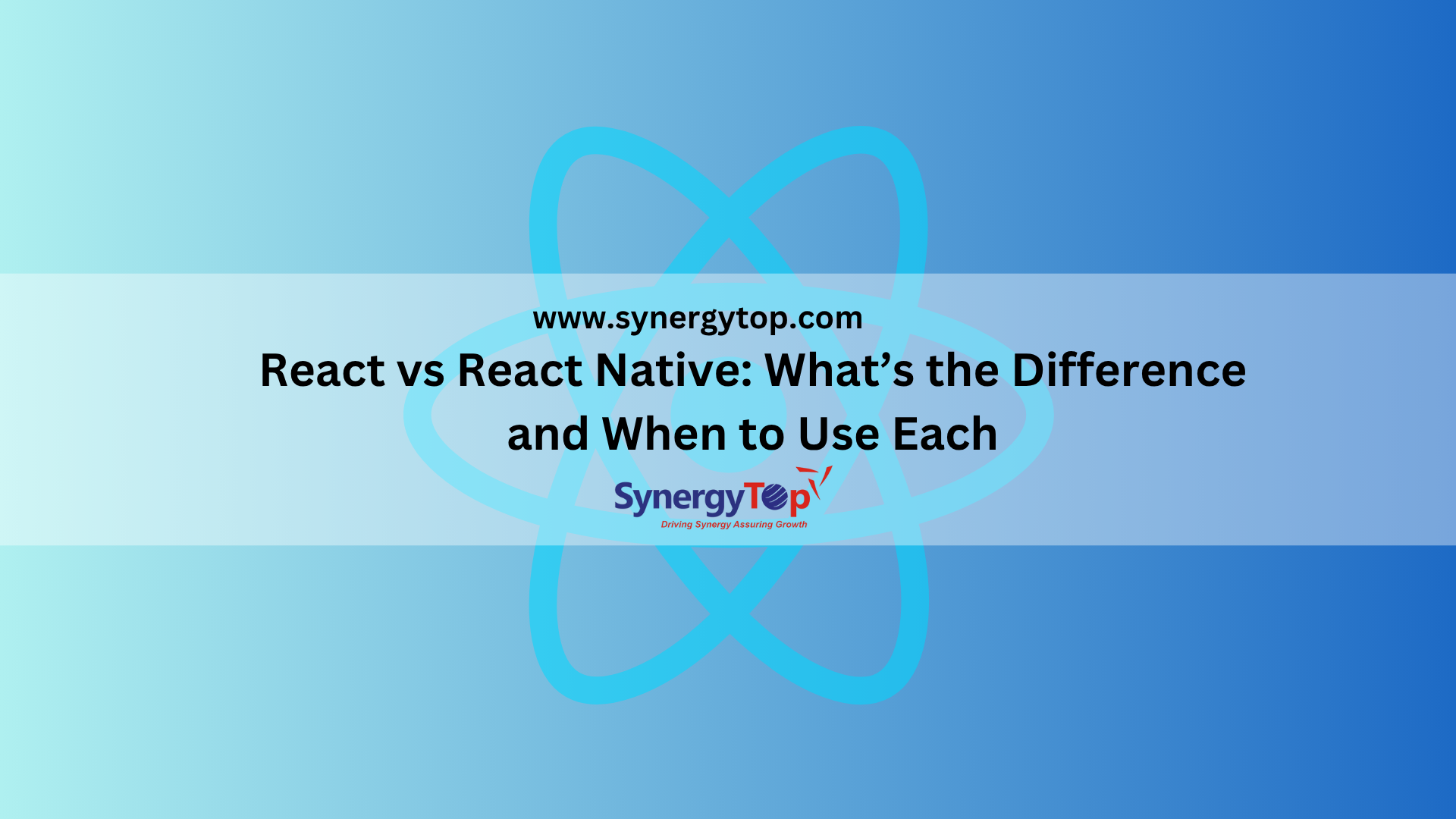Why this guide?
A few years ago, our team at SynergyTop was brought in to audit an eCommerce platform. that was struggling with integrations. The client told us, “We already have a REST API, but every new partner integration feels like reinventing the wheel.”
When we looked under the hood, the problem was clear: the API was “REST” in name only. Endpoints like /createOrder and /deleteCart ignored REST principles. Responses returned 200 OK for almost everything, leaving developers guessing. In short, it wasn’t RESTful—and that difference was costing them time, money, and developer trust.
This isn’t unusual. The terms REST API and RESTful API are often used interchangeably, but they don’t mean the same thing. And that subtle gap in understanding can make or break your API design. At SynergyTop, we’ve seen this confusion across startups and enterprises.
In this article, we’ll break down how REST API differs from RESTful API
What Is REST?
Before we get to the REST vs RESTful debate, you need to understand the basics of REST.
REST is basically an acronym that stands for Representational State Transfer. Despite how technical it sounds, it isn’t a framework, library, or tool. In fact, it’s more like a set of ground rules for how systems should talk to each other over the web.
The idea was first introduced by Roy Fielding in his 2000 PhD dissertation. He believed that if everyone followed a few guiding principles when designing APIs, the web would be faster, more scalable, and easier to evolve. (And it is!)
Also Read: Importance of REST APIs in Oracle ATG
Those principles, often called REST constraints, include:

1. Client–Server
The client (your app, website, or software) and the server (the backend that stores data) must be separate.
The client only asks for data, like “Give me user details.”
The server only responds, like “Here’s the data for user 123.”
Because they’re independent, the frontend team can redesign the app’s look without touching the backend, and the backend can upgrade databases without affecting the client.
2. Statelessness
Every request should carry all the details the server needs. The server does not remember who you are between requests.
If you send a request to fetch your orders, you must include your authentication token every time. The server won’t keep a “session” of your past requests. This makes scaling easy, because any request can go to any server.
3. Cacheable
Some responses can be reused instead of calling the server again. The server should mark what’s cacheable.
For a product list that doesn’t change every second, so it can be cacheable but your bank balance shown in the app is non-caceheable.
4. Uniform Interface
This is the backbone of REST. Everything should look and feel consistent. Resources are identified by clean URLs, e.g. /users/123 instead of /getUserById?id=123.
HTTP methods are used properly and responses should have proper status codes.
5. Layered System
There can be many systems between the client and the server (load balancers, firewalls, proxies). The client should not care or even know about them. This improves security and scalability.
6. Code on Demand (optional)
REST allows servers to send small pieces of code to the client to extend functionality. This isn’t used often, but it’s allowed.
Additional: HATEOAS (Hypermedia as the Engine of Application State)
Instead of simply giving raw data, a RESTful API includes links that guide the client on what’s possible next. With that, clients don’t need to hardcode paths or guess what’s possible. They just follow the links. That makes APIs far more discoverable and resilient to change.
These constraints are the basis for designing web services.
But here’s the where things become complex: just because an API uses some of these principles doesn’t mean it’s truly “RESTful.” And that’s where the confusion begins.
REST API vs RESTful API: Breaking Down The Differences
A REST API is any API that uses HTTP and borrows from REST principles. It might use clear URLs for resources or standard HTTP actions like GET and POST. But it still may not follow all the rules.
A RESTful API, on the other hand, goes beyond surface-level REST and follows the full set of constraints. That includes being stateless, having a uniform interface, and (most importantly!) guiding clients through responses using links (a principle called HATEOAS, which we’ll unpack in a moment).
In other words:
- All RESTful APIs are REST APIs.
- But not all REST APIs are truly RESTful.
And while people often use the terms interchangeably, the difference has real implications for how scalable, discoverable, and maintainable your API will be.
What Makes an API Really RESTful?
Not sure if you’re looking at a “just REST” API versus a fully RESTful API? Ask these questions to find out:
- Is every request stateless?
- Can any server handle the request without relying on past interactions?
- Are resources exposed through a consistent, uniform interface?
- Do endpoints follow a predictable resource-based structure (like /users/123 instead of /createUser)?
- Are HTTP methods (GET, POST, PUT, DELETE) used correctly?
- Do responses include meaningful status codes (200, 201, 404, etc.)?
- Are responses cacheable?
- Does the API tell clients when and how data can be reused instead of hitting the server again?
- Is the system layered?
- Can you put load balancers, gateways, or security layers in between without changing how the client talks to the API?
- Can the server send executable snippets (like scripts) when needed?
- Most importantly: Does it implement HATEOAS?
- Do responses include links that guide clients to “what’s next” (e.g., from a user profile to their orders)?
If you can confidently say “yes” to all of the above, especially HATEOAS, you’re looking at a truly RESTful API. If not, it’s more likely just a basic REST API.
REST vs RESTful
Here’s how the two stack up in practice:
| Feature | REST API (Basic) | RESTful API (Strict) |
|---|---|---|
| URL structure | May use action-based URLs (e.g., /getUser?id=123) | Resource-based (e.g., /users/123) |
| Use of HTTP methods | Often just GET and POST | Full use of GET, POST, PUT, DELETE |
| Hypermedia (HATEOAS) | Rarely included | Always included |
| Content negotiation | Often assumes JSON only | Supports multiple formats (JSON, XML, etc.) |
| Caching | Often overlooked | Built-in through headers |
| Scalability | Can become fragile | Naturally scalable and maintainable |
When to Use REST vs RESTful APIs?
Not every project needs the full rigor of RESTful design.
A basic REST API makes sense when:
- You’re building a prototype or MVP and speed is the priority.
- The API is short-lived, internal, or low risk.
- You need something quick and functional rather than perfect.
For startup MVPs, it usually makes sense to relax some REST rules to help them launch fast.
A RESTful API makes sense when:
- The API will be public-facing or long-lived.
- Multiple clients or third parties will rely on it.
- Scalability, caching, and future evolution are important.
For enterprise-grade systems, RESTful APIs are a must-have because that’s what ensures consistency, easier integrations, and long-term maintainability.
Getting Started with the Right API Design
Cutting corners on API design may save a few days in the short run, but it usually costs months of refactoring later. Investing that extra effort in RESTful design gives you APIs that are robust, maintainable, and easier to extend as your business grows.
At SynergyTop, we’ve seen both sides—projects that struggled due to “quick fixes,” and projects that thrived because of a well-laid-out API strategy. If you’re planning an API initiative or rethinking an existing one, we can help you avoid the usual mistakes and set the right foundation.
















